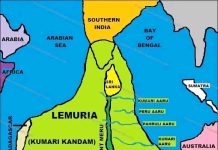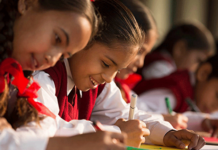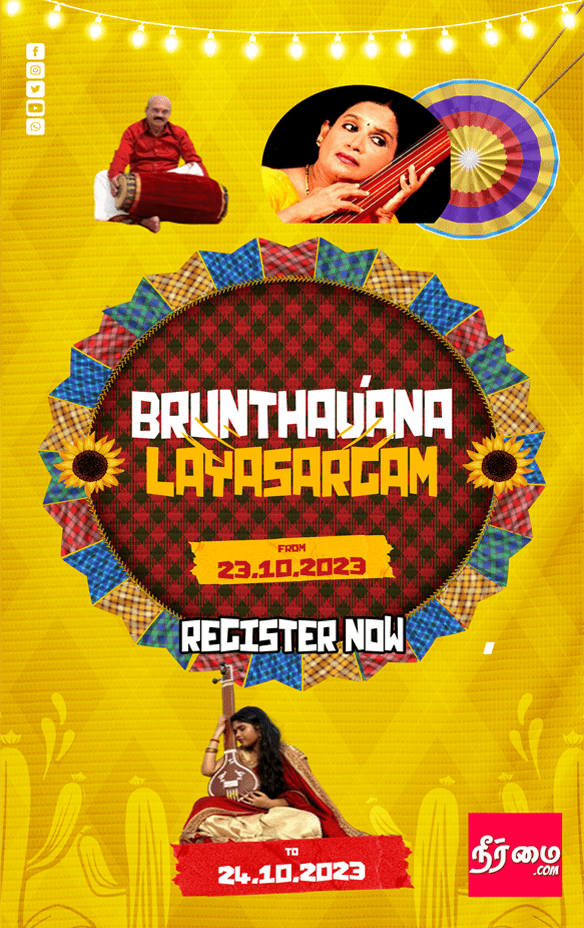Introduction
Baila, a lively and rhythmic music genre, has captivated audiences in Sri Lanka and Goa for centuries. Originating from Afro-Portuguese influences, Baila has evolved uniquely in both regions, reflecting their distinct cultural tapestries. This article delves into the history, evolution, and similarities of Baila music in Sri Lanka and Goa, highlighting its enduring charm and cultural significance.
Source : Read here!
Origins of Baila Music
The term “Baila” derives from the Portuguese word bailar, meaning “to dance.” Introduced to Sri Lanka by Portuguese colonizers in the 16th century, Baila music emerged from the fusion of Portuguese melodies and African rhythms brought by enslaved Africans, known as Kaffirs. These musical traditions blended with local Sri Lankan elements, giving birth to a unique genre characterized by its 6/8 time signature and infectious energy.
Source : Read here!
Baila in Sri Lanka
In Sri Lanka, Baila transcended its colonial origins to become a staple of social gatherings, weddings, and festive occasions. The genre diversified into various substyles:
-
Chorus Baila: Popularized by Wally Bastiansz, this style introduced catchy choruses that encouraged audience participation.
Source : Read here! -
Waada Baila: A competitive form where singers engage in lyrical battles, showcasing wit and improvisation.
-
Calypso Baila: Influenced by Caribbean calypso, incorporating acoustic guitars and bongo drums.
Source : Read here!
Prominent artists like M.S. Fernando, Desmond de Silva, and Sunil Perera further enriched Baila’s repertoire, blending it with contemporary themes and instruments.
Source : Read here!
Baila in Tamil Culture
The Tamil-speaking communities in Sri Lanka embraced Baila, infusing it with their linguistic and cultural nuances. Artists such as Nithi Kanagaratnam and A.E. Manoharan pioneered Tamil Baila, producing hits like “Chinna Maamiye” that resonated with audiences across the island.
Source : Read here!
Baila in Goa
Goa’s Baila, while sharing Portuguese roots, developed its distinct flavor. Konkani Baila songs often feature themes of love, daily life, and social commentary, delivered with humor and zest. Remo Fernandes’ “Ya Ya Maya Ya” exemplifies Goan Baila’s vivacity, blending traditional rhythms with modern instrumentation.
Comparative Analysis: Sri Lankan and Goan Baila
Despite geographical distances, Sri Lankan and Goan Baila share striking similarities:
-
Rhythmic Structure: Both utilize the 6/8 time signature, promoting dance and movement.
Source : Read here! -
Cultural Fusion: Each reflects a blend of Portuguese, African, and local musical elements.
-
Social Function: Baila serves as a medium for storytelling, celebration, and community bonding in both regions.
Source : Read here!
However, linguistic differences and regional themes provide each with a unique identity.
Notable Baila Songs and Performances
-
Sri Lankan Baila: “Pissu Vikare” by M.S. Fernando showcases the genre’s playful nature.
Source : Read here! -
Tamil Baila: “Chinna Maamiye” by Nithi Kanagaratnam remains a classic.
-
Goan Baila: “Ya Ya Maya Ya” by Remo Fernandes captures Goan festivity.
Conclusion
Baila music, with its rich history and cross-cultural roots, continues to thrive in Sri Lanka and Goa. Its adaptability and infectious rhythm ensure its place in contemporary celebrations, preserving a legacy that bridges continents and generations.
Explore Baila Music
🎵 Song: Ya Ya Maya Ya
Singer: Remo Fernandes
Language: Konkani
Lyricist: Remo Fernandes
Released: 1997
📝 Lyrics and Meaning in English
-
Undra mojea mama, ani au sangtam tuka
Your Uncle Mouse, I am warning you -
Ani mazorichia pila lagi fel mandi naka
Don’t play with the kitten of that cat -
Undir mama ailo ani patch ponda liplo
Uncle Mouse came and hid inside a box -
Ani mazorichia pilan taka eka gassa kailo
The kitten of that cat swallowed him in one bite -
Ya ya maya ya (Chorus sound)
Ya ya maya ya -
Modgovam teuyeager teuyeager mez kelam redon
At the Margao bus station, there’s a table standing -
Tacher ek cheddum nachota Vankde korun bandu
On that table, a girl is dancing, twisting her waist -
Taka ek paklo choita Burka galun tondu
A foreigner wearing a burka is watching her silently -
Arrey paklia choinakare cheddum nui bailu randu
Hey foreigner, don’t look at her—she’s not a girl, she’s a widow -
Farar far zatai ranantu
Far away in the jungle, gunfire is happening -
Rane mathai pakleaku, Pakle mathai raneaku
The rebels are killing the foreigners, and the foreigners are killing the rebels
🎶 Song Meaning
This Konkani song is a humorous and socially reflective piece in Baila style. Through metaphorical storytelling—like the tale of the mouse and the kitten—it discusses deeper issues of human relationships, foreigner perceptions, and social conflicts, all wrapped in witty, catchy lines.
“Ya Ya Maya Ya” is a classic Goan Baila song that blends joy and satire. Its upbeat rhythm makes it a popular dance number at festivals and celebrations, reflecting the vibrant cultural heritage of Goa.
▶️ Watch the full song here on YouTube:
🎵 பாடல்: Ya Ya Maya Ya
பாடகர்: ரெமோ பெர்னாண்டஸ்
மொழி: கொங்கணி
பாடலாசிரியர்: ரெமோ பெர்னாண்டஸ்
வெளியீடு: 1997
📝 பாடல் வரிகள் மற்றும் தமிழாக்கம்
1. Undra mojea mama, ani au sangtam tuka
உன் தாய்மாமா, நான் உனக்கு எச்சரிக்கையாக சொல்கிறேன்
2. Ani mazorichia pila lagi fel mandi naka
அந்த பூனையின் குட்டியுடன் விளையாடாதே
3. Undir mama ailo ani patch ponda liplo
மாமா எலி வந்தான், மரப்பெட்டிக்குள் ஒளிந்தான்
4. Ani mazorichia pilan taka eka gassa kailo
அந்த பூனை குட்டி அவனை ஒரே கடியில் விழுங்கிவிட்டது
5. Ya ya maya ya (பாடல் ஒலி)
யா யா மாயா யா
6. Modgovam teuyeager teuyeager mez kelam redon
மார்காவ் பேருந்து நிலையத்தில், ஒரு மேசை உள்ளது
7. Tacher ek cheddum nachota Vankde korun bandu
அந்த மேசையில் ஒரு பெண் இடுப்பை ஆட்டி நடனமாடுகிறாள்
8. Taka ek paklo choita Burka galun tondu
ஒரு வெளிநாட்டு ஆண், முகத்தை மூடி, சாவியைப் பார்த்துக்கொண்டிருக்கிறான்
9. Arrey paklia choinakare cheddum nui bailu randu
ஏய் வெளிநாட்டு ஆணே, பார்க்காதே, அவள் பெண் அல்ல, விதவை
10. Farar far zatai ranantu
காட்டில் துப்பாக்கிச் சூடு நடக்கிறது
11. Rane mathai pakleaku Pakle mathai raneaku
ரானேக்கள் வெளிநாட்டவர்களை கொல்லுகிறார்கள், வெளிநாட்டவர்கள் ரானேக்களை கொல்லுகிறார்கள்
🎶 பாடலின் பொருள்
இந்த பாடல், கொங்கணி மொழியில், காமெடி மற்றும் சமூக விமர்சனங்களை கலந்த ஒரு பைலா பாணி பாடல். பாடல் வரிகளில், ஒரு எலி மற்றும் பூனை குட்டியின் கதையைச் சொல்லி, மனித உறவுகளின் சிக்கல்கள், வெளிநாட்டவர்களின் பார்வை, மற்றும் சமூகத்தில் நடக்கும் போராட்டங்களை கேலியாகவும், சிந்தனைக்குரியவையாகவும் வெளிப்படுத்துகிறது.
“Ya Ya Maya Ya” என்பது ஒரு பைலா பாணி பாடல், இது கோவாவின் கலாசாரத்தை பிரதிபலிக்கிறது. பாடலின் ஒலி மற்றும் இசை, மகிழ்ச்சி மற்றும் உற்சாகத்தை ஏற்படுத்துகிறது, மேலும் இது பல நிகழ்ச்சிகளில் நடனத்திற்குப் பயன்படுத்தப்படுகிறது.
இந்த பாடலை முழுமையாக அனுபவிக்க, கீழே உள்ள YouTube வீடியோவைப் பார்வையிடலாம்:
📝 සිංහල පරිවර්තනය සහ අර්ථය
🎵 ගීතය: Ya Ya Maya Ya
ගායකයා: Remo Fernandes
භාෂාව: කොන්කානි
පද රචකයා: Remo Fernandes
නිකුත් වීම: 1997
📝 ගීත පද සහ අර්ථය
-
Undra mojea mama, ani au sangtam tuka
ඔයාගේ මාමා උන්දිරයා, මම ඔයාට අනතුරු ඇඟවීමක් කරනවා -
Ani mazorichia pila lagi fel mandi naka
ඒ පිසාළූ පැටියා සමඟ රංචුවෙන්න එපා -
Undir mama ailo ani patch ponda liplo
මාමා උන්දිරයා ආවාවා, පෙට්ටියක ඇතුළට සැඟවුණා -
Ani mazorichia pilan taka eka gassa kailo
පිසාළූ පැටියා ඔහු එකම කටින් බිඳී දමා ගත්තේය -
Ya ya maya ya (පද ශබ්දය)
යා යා මායා යා -
Modgovam teuyeager teuyeager mez kelam redon
මාර්ගාඔ බස් නැවතුමේ, මේසයක් තියනවා -
Tacher ek cheddum nachota Vankde korun bandu
ඒ මේසේ උඩ ගෑනු කෙනෙක් දිව අලවලා නටනවා -
Taka ek paklo choita Burka galun tondu
විදේශීය කෙනෙක් බුර්කා පළඳිලා නිරවද්යව බලාගෙන ඉන්නවා -
Arrey paklia choinakare cheddum nui bailu randu
අය්යෝ විදේශියා, බලන්න එපා, ඇය ගැහැණියක් නෙමෙයි – වීධවියක් -
Farar far zatai ranantu
දුරැවෙ කාන්තාරේ වෙඩි තැබීමක් සිදුවෙමින් පවතිනවා -
Rane mathai pakleaku, Pakle mathai raneaku
වනාන්තර ජාතිකයන් විදේශීයයන්ව මරනවා, විදේශීයයන් වනාන්තර ජාතිකයන්ව මරනවා
🎶 ගීතයේ අරුත
මෙය කොන්කානි භාෂාවේ සමාජ විවේචනාත්මක හා විහිළුදායක පද රචනාවකි. එහි බළලා සහ උන්දිරයාගේ කතාව, සංකේතාත්මකව මනුෂ්ය සබඳතා, විදේශීය දැක්ම සහ සමාජ ගැටළු විවරණය කරයි.
“Ya Ya Maya Ya” යනු ගෝවාවේ සුපිරි ජනප්රිය බයිලා ගීතයකි. එහි සතුටුදායක සංගීතය හා වදන් රටාවන් නිසා එය විවාහ, උත්සව, හා සාදවලදී නර්තනය සඳහා බහුලව භාවිතා වේ.
▶️ YouTube වීඩියෝව මෙතනින් බලන්න


































